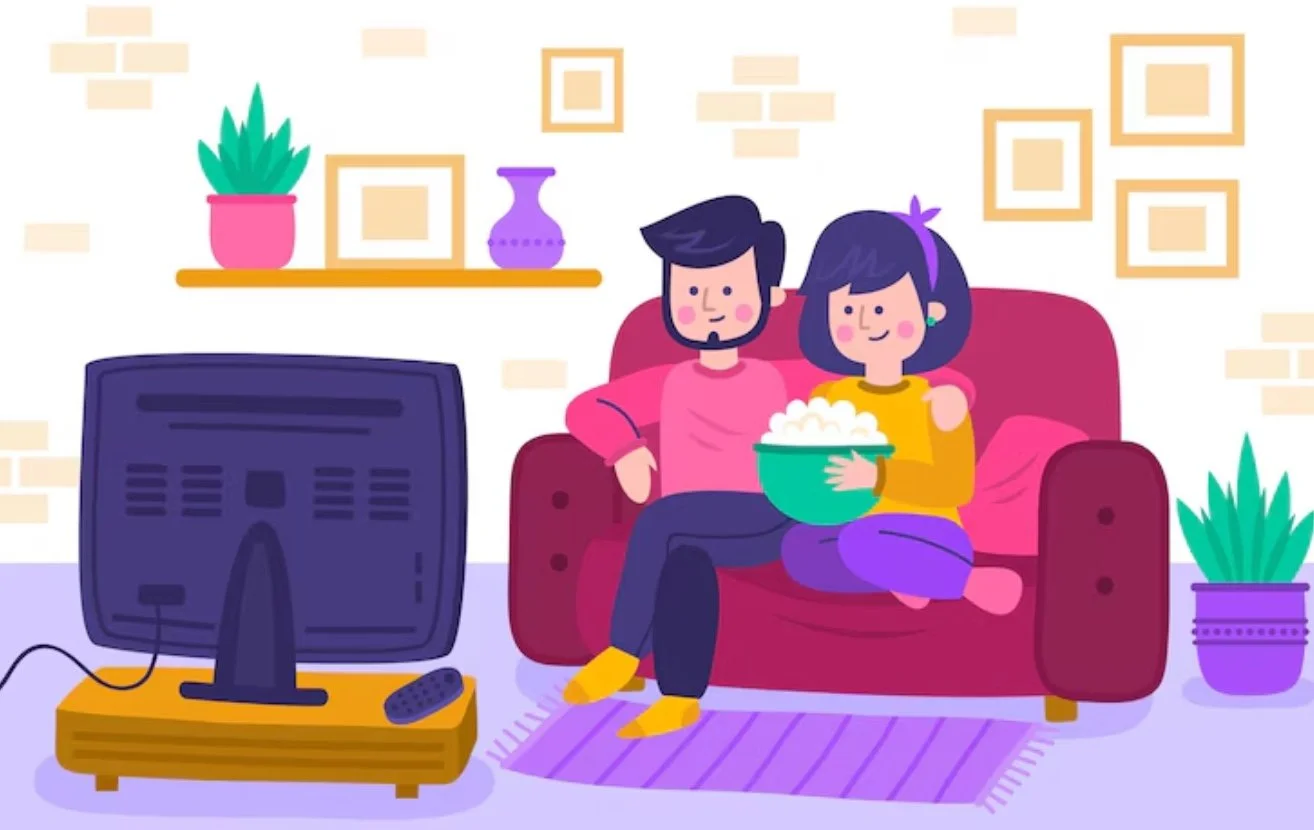Comfort Content: Understanding the Desire for a Rewatch
Victoria Gwilt, LCMHCA
“You have to watch this show!” “You’re going to love this movie!” “Have you seen the new trailer that came out??” It seems like there is a constant flood of content lately, and honestly, I’ve been having a hard time keeping up. New series, new movies, and new trends are inundating my feed. Not to mention, the actual news is a nonstop loop of information. I found myself asking, “What should I be paying attention to??” I don’t know about you, but sometimes I feel exhausted by content. At some point, relaxing by watching a new show became an overwhelming decision-making moment.
And so… I decided I wasn’t making the decision anymore. I found myself gravitating toward old shows I had already seen. Stories where I already knew the ending. Jokes I had already laughed at. Characters whose flaws and growth I was already familiar with.
When someone asked, “Watched anything good lately?” my answers started to become mentions of dramas from the early 2000s that I had started from the beginning. This was met with some confusion. Why would I rewatch an old show with outdated effects when there is a hot new one with amazing visuals?
I wanted to understand why I was avoiding the new shows everyone else was diving into. Don’t get me wrong—I still love a good, compelling story with new characters, fresh jokes, and new suspense. But I also found myself constantly putting off starting something new and instead launching an episode of The Office for the 100th time (only a slight exaggeration).
If you’ve ever felt this kind of decision fatigue at the end of the day, you’re not alone. According to a 2024 study by the National Research Group, three out of the top five aspects consumers value in streaming services relate to the availability of “old” content. The study also reported that 60% of streaming activity is based on older shows and rewatches (NRG, 2024). Interestingly, Millennials and Gen Z make up the majority of this rewatching trend.
The anxiety that our society has felt—especially the spike since COVID—has left many of us feeling wary of the unknown. That anxiety and unease can even spill into our television choices. We don’t want suspense and unpredictability in the comfort of our living rooms; we want something familiar and safe.
Shows we’ve already seen bring a certain level of comfort. Some of us want TV time to be a genuine “turn off the brain” moment. As simple as that—we don’t want to think. Between the little screens in our pockets, the medium screens at our desks, and the big screens at home, sometimes we just need a break. No more consuming. No more processing.
There’s also the nostalgia factor that comes with rewatching something familiar. Remembering the first time you heard a certain joke and how laugh-out-loud funny it was. Remembering the big reveal and how shocked you were, maybe even recalling who you were with when you watched it and how your predictions played out. The feeling of familiarity, combined with still laughing at that same joke years later or still loving that twist, brings a nostalgic comfort that can feel like a reward at the end of a long day.
Our news and our feeds are constantly changing with new information. Sometimes it’s overwhelming being so connected to everything and everyone. So yes, new shows and movies will continue to draw large audiences and give us something to talk about around the water cooler. But it’s also perfectly okay to turn off the brain sometimes and know that Ross and Rachel end up together, Ted finally tells his kids how he met their mother, and Michael will always make a cringey joke in the office.
Reference: Why is older content making a comeback? (2024, July 17). National Research Group.
https://www.nrgmr.com/our-thinking/entertainment/why-is-older-content-making-a-comeback/



